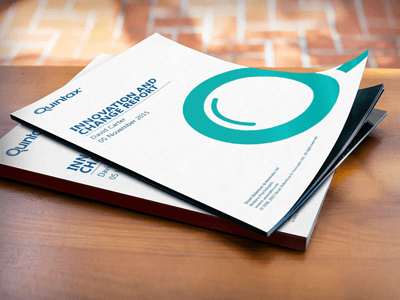
Quintax is a short form questionnaire which can be completed on-line in less than 15 minutes – this gives it great versatility because it is easy to deploy and fit into an assessment exercise, while also being easy to understand and complete.
Quintax is innovative in providing two alternative outputs: a Quintax Profile and a Quintax Type that enable it to be used in diverse settings. The name ‘Quintax’ reflects two things: ‘Quin’ to represent the ‘Big 5’ model of personality, and ‘tax’ to represent the use of this model in forming a ‘taxonomy’ or ‘type’ classification of responses to the questionnaire. Our type model, however, is an innovation in being based on the Big 5 and not on outdated psychodynamic ideas.
The Big 5 approach allows us to provide a graded profile of the respondent against the 5 main personality traits. Colour indicates the strength of preference shown bya person’s responses on each trait, with redder areas showing clearer preferences.With Quintax Analytics, and Managerial and Professional Impact reports, (see page link), the profile is well suited to selection processes.
However, utilising the poles of each of the five factors in turn we can create a broader description of the respondent’s preferences by looking at those poles which are nearest to their questionnaire results. For example, The Quintax Type ‘IPAG-C’ is used to describe questionnaire responses that are closest to the Introverted, Personable, Adaptable, Grounded, and Calm poles of the five traits.
Whether or not the respondent has clear leanings on all factors, the Quintax Type description will give us a good working description of the person’s responses in an holistic form. The Quintax Type Report can be used to discuss the implications of the results with the individual respondent. It can be used with other reports, for example Learning Style, Team Style, or Leadership Style (click here) to consider development issues and options.
The versatility of Quintax is based partly upon the potential to utilise Profile approaches to the person in situations such as selection, where a graded understanding of a person’s preferences may be needed, and the chance to use the Quintax Type approach for feedback where a broad description may be useful for initial exploration of development issues. However, they can also be used together, for example when a selector uses the Profile but provides the Type Description as a summary for the respondent and/or panel, enhancing the versatility of the whole package. These aspects together make Quintax one of the most innovative and versatile assessment tools on the market.
